KubeVirt Quick Setup Guide
This document provides a quick setup guide for Platform9 Managed KubeVirt (PMKV).
PMKV supports creating virtual machines (VMs) in Kubernetes clusters with on-premises infrastructure or public cloud providers. You can create and manage VMs on Kubernetes clusters deployed across any of these environments.
Prerequisites
If you are new to PMKV, we recommend starting with the Platform9 Managed KubeVirt Overview section. This guide also assumes you are familiar with setting up and deploying Kubernetes using Platform9 Managed Kubernetes (PMK). If not, refer to the get started with PMK as a prerequisite step. This will also guide you on supported cluster infrastructure, operating systems, and other requirements to get your clusters up and running before you begin deploying VMs on them.
Enabling KubeVirt
Once you are up and running with PMK, you can start deploying Kubernetes clusters with KubeVirt enabled and subsequently create and manage VMs on them.
Navigate to the cluster creation wizard in the PMK SaaS console
- Select "Add Cluster" in the top-right corner of the Infrastructure view
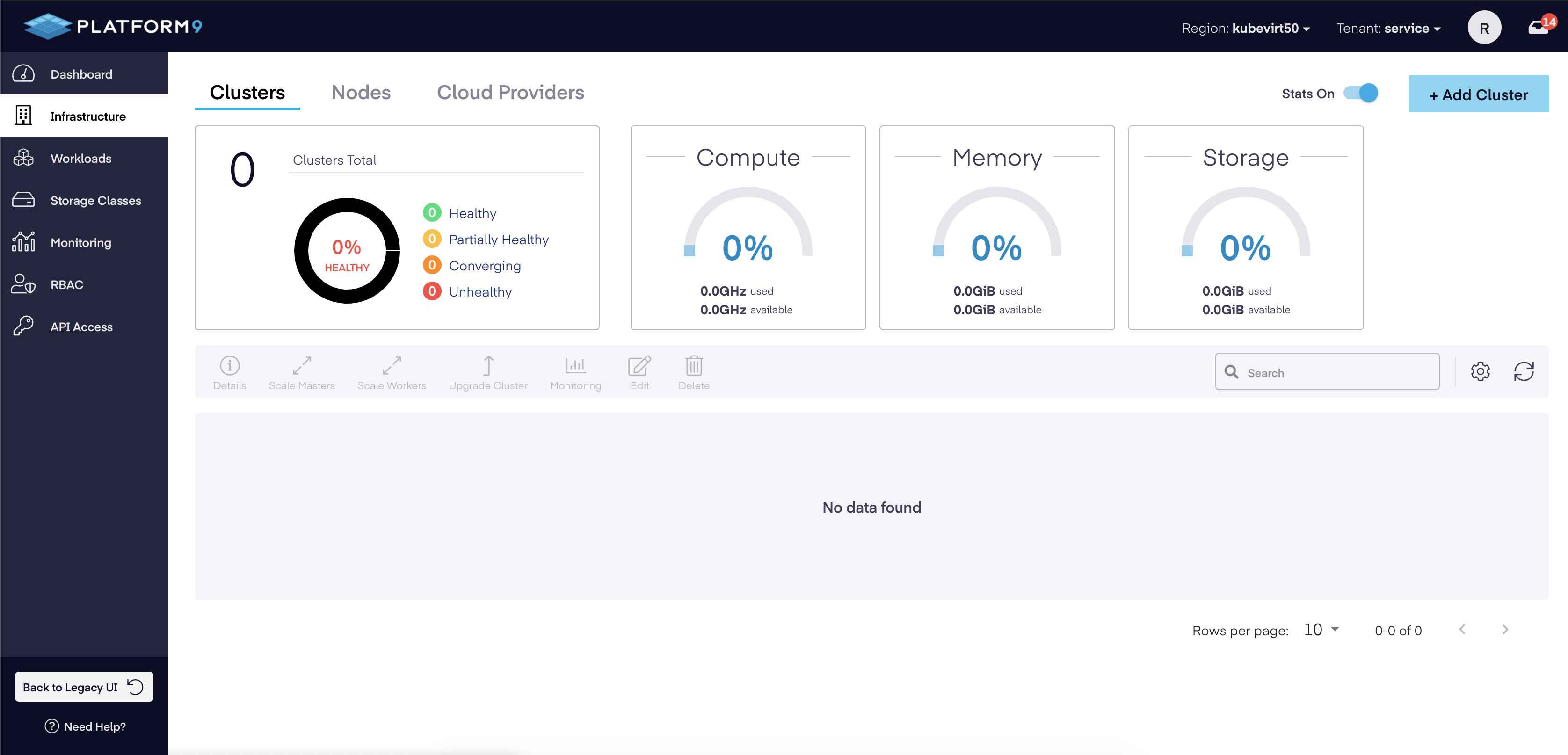
PMK Infrastructure Console
- Specify deployment details for your Kubernetes cluster as usual
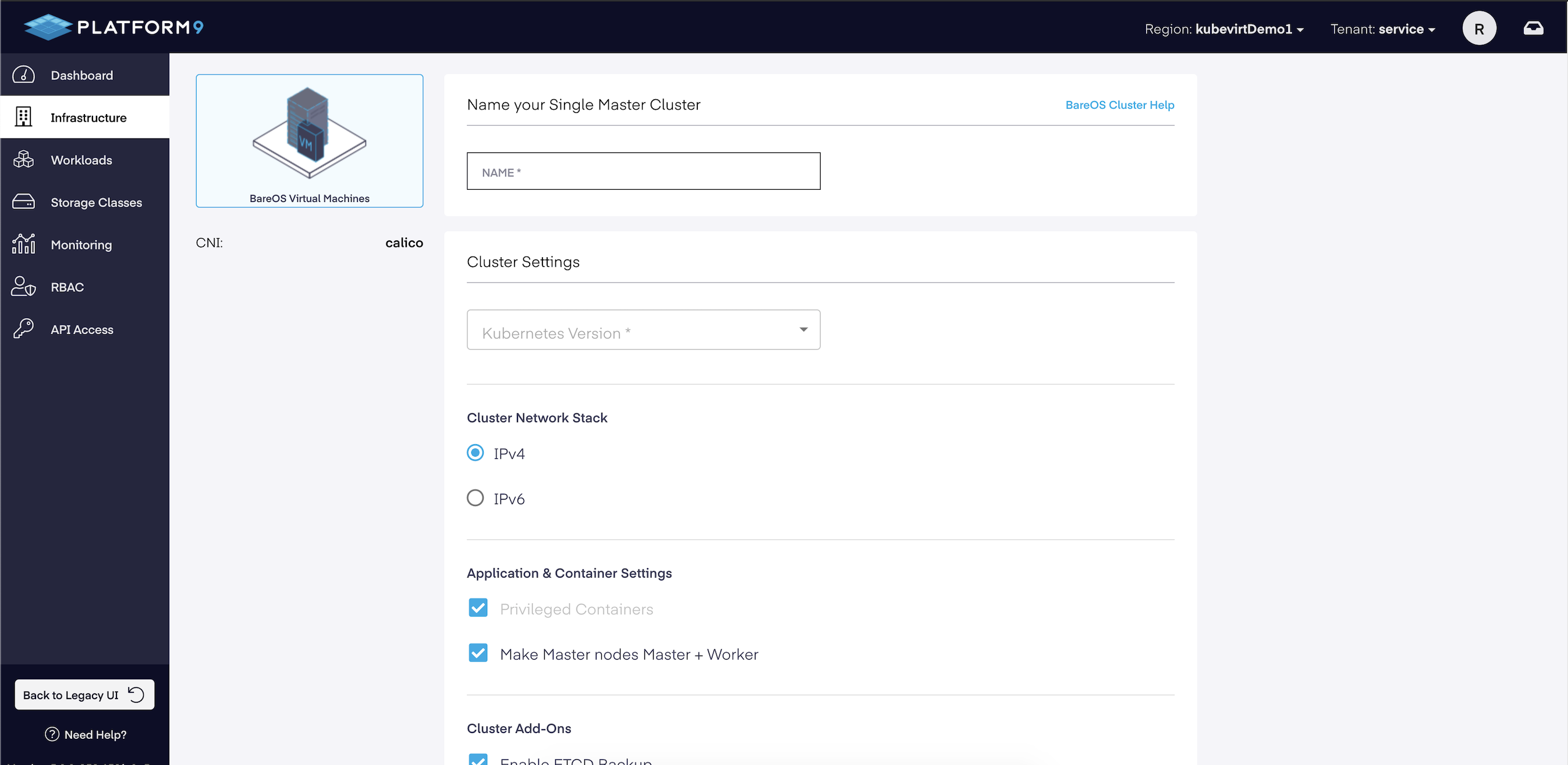
Enable KubeVirt on the cluster
- Select the "Network Plugin Operator" option
- Select the "Enable KubeVirt" option
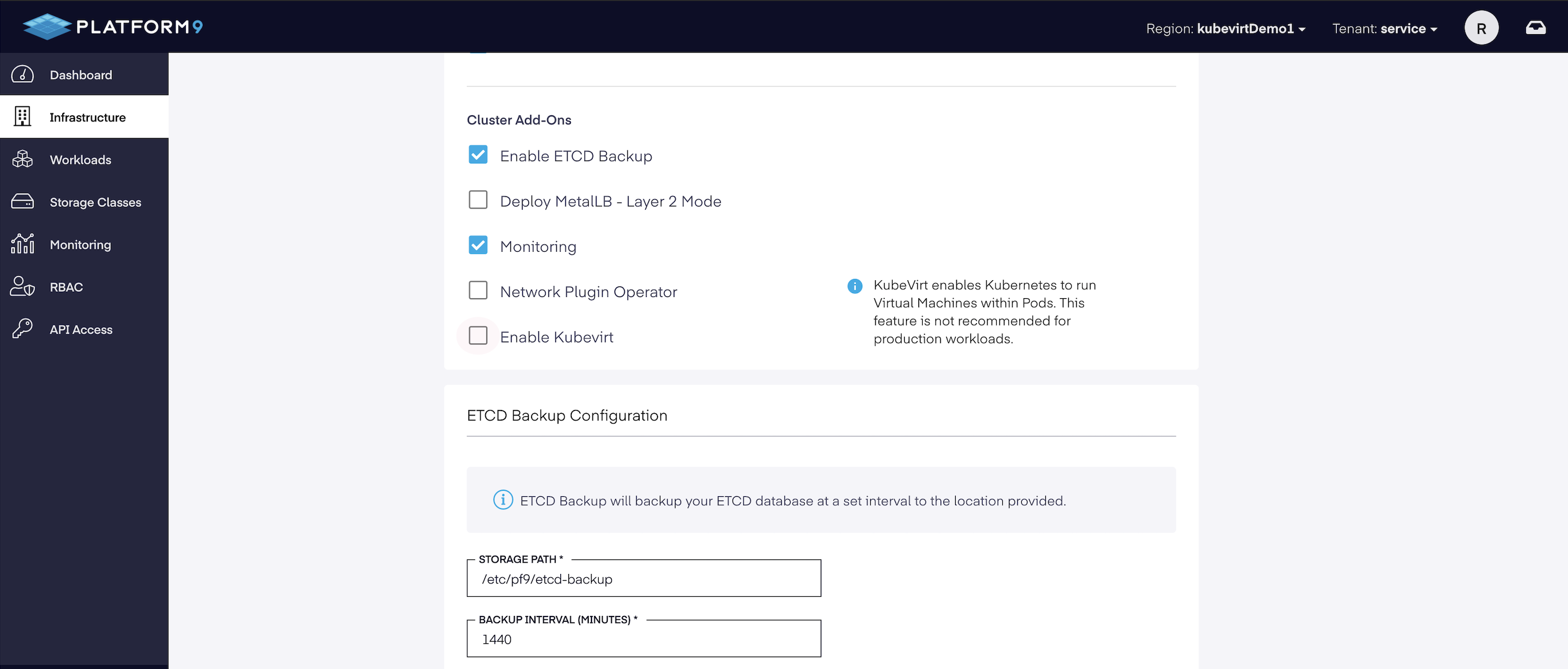
The Network Plugin Operator is necessary for KubeVirt functionality. Not selecting it will prevent KubeVirt from being installed.
Complete Cluster Creation
- Nothing else in the cluster creation specifications need to be KubeVirt specific. Proceed to completing cluster creation
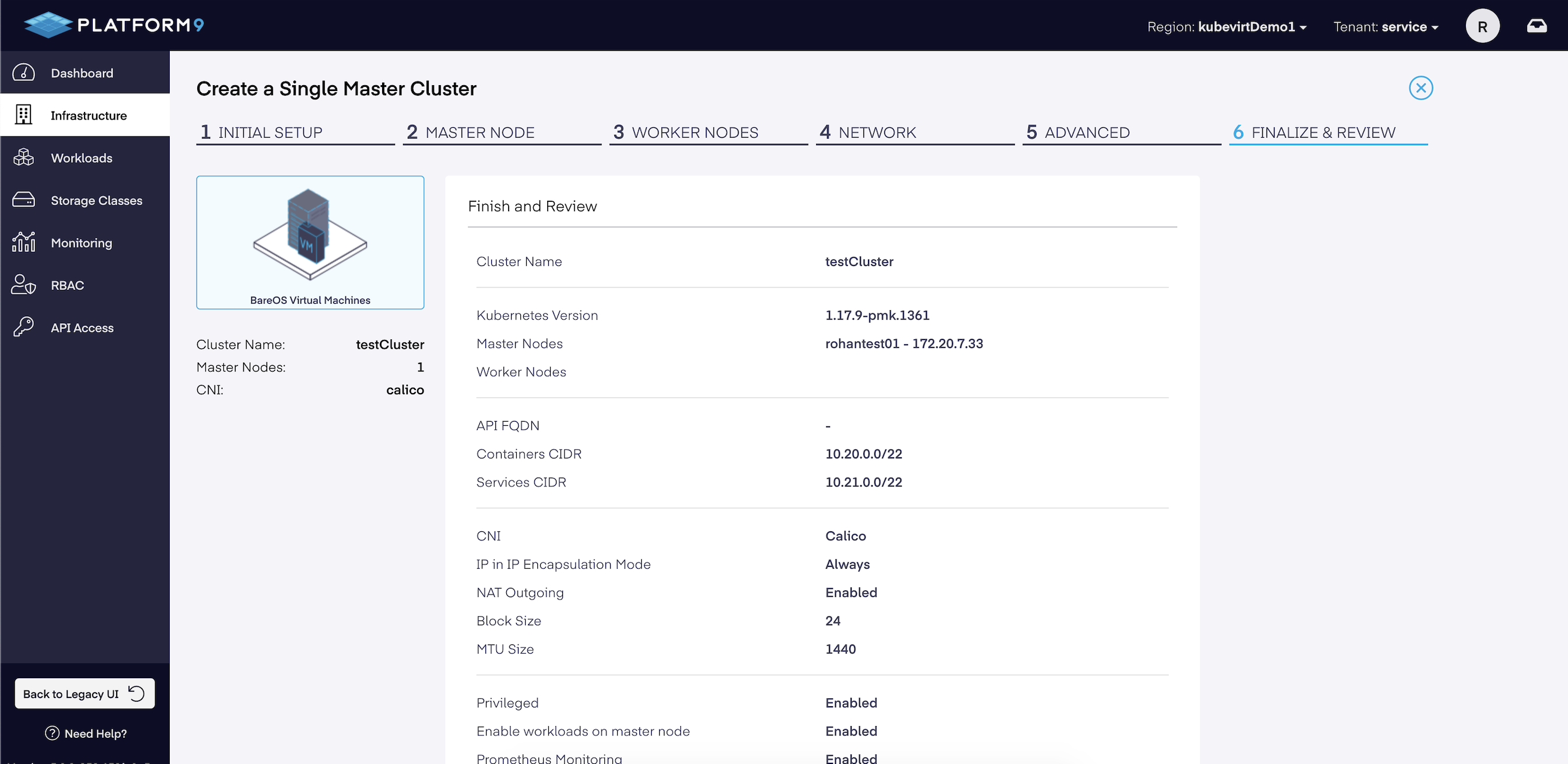
- Navigate back to the Infrastructure view to verify that your cluster is created and ready to go\
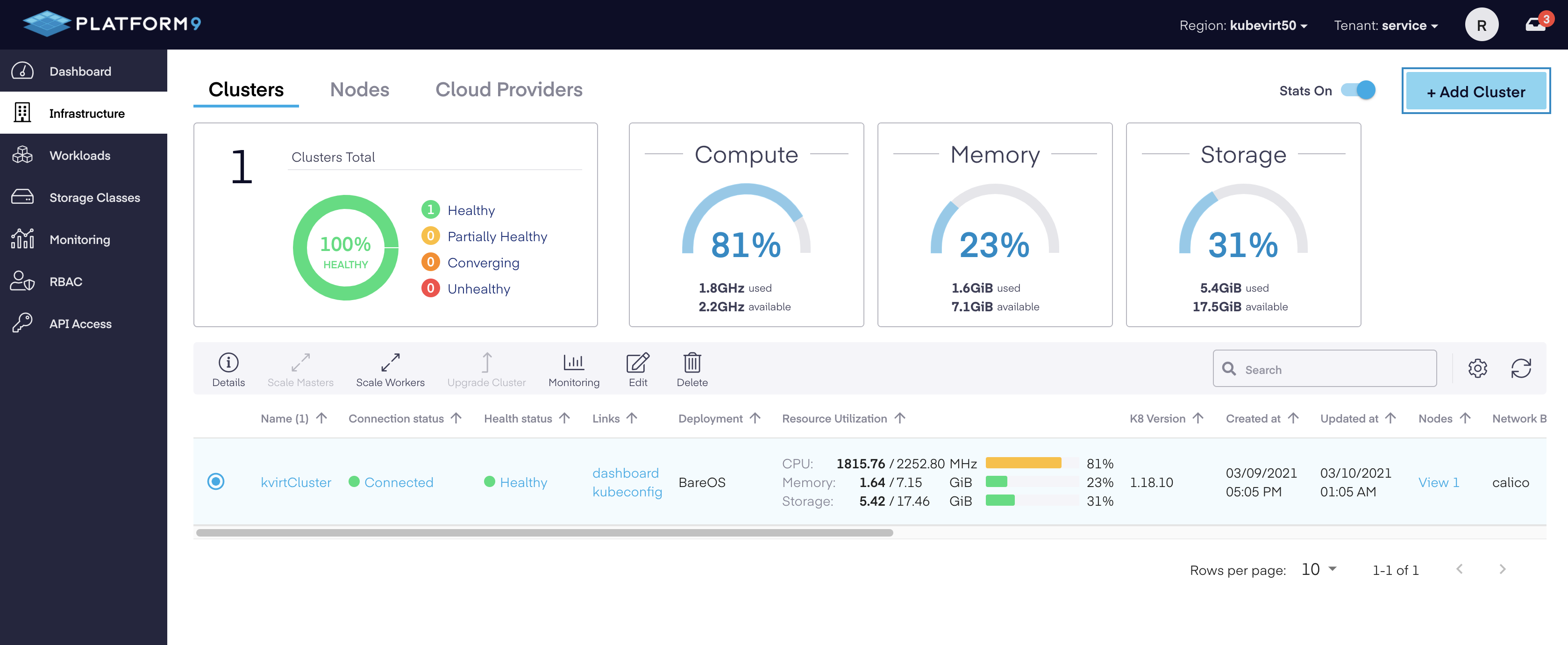
You should now be able to start creating and managing virtual machines in this Kubernetes cluster!
The KubeVirt User Guide is a great place to get started.